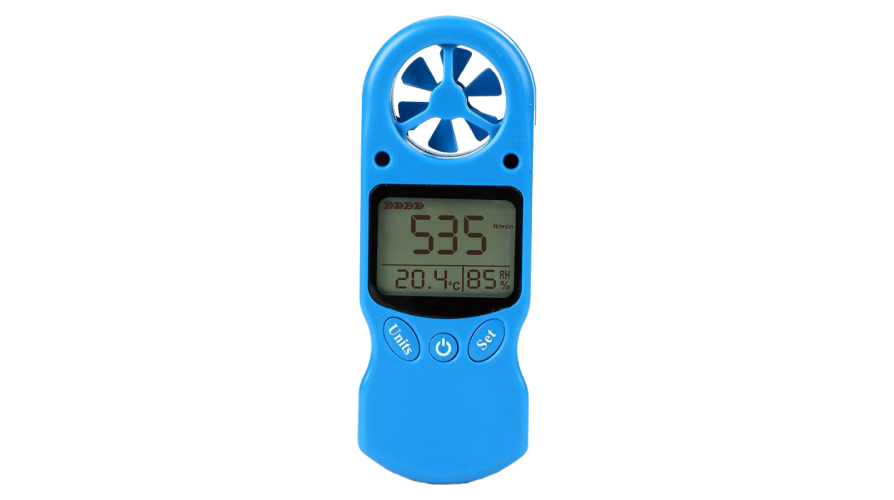Anemometer Innovations: The Latest Technology for Wind Rate Measurement
Anemometer Innovations: The Latest Technology for Wind Rate Measurement
Blog Article
Anemometers Unveiled: Comprehending Their Value in Ecological Surveillance and Safety Procedures
The duty of anemometers in environmental tracking and safety measures is usually ignored, yet their significance is undeniable. These tools have a lengthy background rooted in scientific query and technical advancements, advancing to come to be vital devices in different areas. From weather forecasting to air travel security, anemometers play a critical role in giving exact information that informs decision-making processes and enhances general safety and security. Comprehending the intricacies of anemometers introduces a globe of crucial understandings that are basic to our understanding of the setting and the actions we require to guarantee security.
History of Anemometers
The advancement of anemometers can be mapped back to the old civilizations where rudimentary wind gauging gadgets were first utilized. One of the earliest recognized anemometers was the hemispherical cup anemometer created by Leon Battista Alberti in the 15th century.
In the 18th century, the distinguished scientist John Thomas Romney Robinson presented the Robinson anemometer, which featured four hemispherical cups mounted on straight arms that extended from a main axis. This design ended up being a criterion in atmospheric dimensions as a result of its accuracy and dependability. Over the years, improvements in technology caused the advancement of more modern anemometers, including ultrasonic anemometers and laser Doppler anemometers, providing enhanced precision and effectiveness in measuring wind speed and instructions. The history of anemometers showcases an amazing journey of innovation and progress in the area of meteorology.
Types of Anemometers
Throughout the field of meteorology, different sorts of anemometers have been established to accurately determine wind speed and instructions. The most usual kind is the cup anemometer, which is composed of 3 or 4 cups mounted on horizontal arms that revolve with the wind. As the mugs spin, the speed at which they rotate is straight proportional to the wind rate. An additional commonly made use of type is the vane anemometer, which features a tail or fin that straightens itself with the wind direction. This placement enables the tool to figure out the wind instructions. Sonic anemometers use ultrasonic signals to determine wind speed and instructions accurately. They are frequently used in research applications as a result of their high accuracy. Hot-wire anemometers operate based on the principle that the cooling effect of wind on a warmed wire is symmetrical to the wind rate. These anemometers are suitable for measuring low wind rates with high accuracy. Each kind of anemometer has its strengths and is selected based on the particular needs of the surveillance task handy.
Applications in Meteorology
Having gone over the various types of anemometers used in meteorology for gauging wind speed and instructions, it is vital to explore their practical applications in the area. Anemometers play an important role in meteorology by offering real-time and precise data on wind problems (anemometer). Meteorologists use anemometers to monitor wind rate and direction to forecast weather patterns, concern warnings for extreme weather occasions like storms, twisters, and storms, and evaluate weather for aviation security
In weather forecasting, anemometers aid in recognizing local and regional wind patterns, which are important for forecasting weather condition adjustments and identifying weather patterns. These tools are additionally made use of in research study to study microclimates, metropolitan warmth islands, and air pollution diffusion. Additionally, anemometers are employed in agriculture to optimize crop management practices, such as irrigation and visit their website pesticide application, based on wind conditions.
Value in Aeronautics Security
An integral aspect of making sure aeronautics security lies in the thorough monitoring of wind problems making use of anemometers. Anemometers play an essential function in aeronautics by providing real-time data on wind speed and instructions, assisting pilots in making informed decisions during trip, touchdown, and take-off. Unpredictable and strong winds can substantially impact aircraft operations, making it important for aeronautics authorities to depend on exact wind measurements to make certain the safety of guests and staff.

In the dynamic setting of aviation, where even small modifications in wind rate and instructions can have profound impacts, anemometers stand as crucial tools for promoting secure and safe and secure flight.
Duty in Environmental Study
Anemometers play a critical function in ecological study by supplying vital data on wind speed and direction. By precisely determining wind features, anemometers help researchers assess the motion of pollutants in the air, examine the influence of industrial emissions, and predict the spread of pollutants in the setting.


Final Thought
In verdict, anemometers have played a critical function in ecological surveillance and security procedures. Understanding the relevance of anemometers is necessary for properly determining wind speed and instructions, which is crucial for predicting weather patterns, making certain secure aeronautics procedures, and carrying out ecological studies.
One of the earliest well-known anemometers was the hemispherical cup anemometer invented by Leon Battista Alberti in the 15th century. Over the years, improvements in innovation led to the advancement of even more contemporary anemometers, consisting of ultrasonic anemometers and laser Doppler anemometers, using enhanced precision and performance in determining wind speed and direction. Hot-wire anemometers operate based on the concept that the cooling impact of wind on a heated cable is proportional to the wind rate. Meteorologists use anemometers to monitor wind speed and instructions to forecast weather patterns, problem cautions for extreme climate occasions like hurricanes, storms, and typhoons, and analyze climatic conditions for aeronautics safety and security.
Comprehending her latest blog the importance of anemometers is necessary for properly measuring wind rate and instructions, which is important for forecasting weather condition patterns, guaranteeing safe aviation operations, and carrying out environmental studies. (anemometer)
Report this page